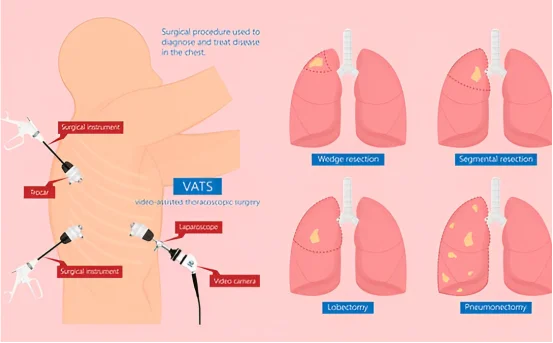Gum health is a critical part of a person’s oral hygiene; however, it is often neglected until worrisome symptoms manifest. Periodontitis, or severe gum disease, necessitating surgical intervention is marked by the inability to manage the condition with conservative approaches, and diagnosis for periodontal surgery is a distinct form of dental surgery intended for such cases. Even so, Preoperative diagnosis remains crucial in identifying the best approach tailored to the patient’s requirements.
Diagnosis of periodontal disorder requires an elaborate assessment of gums alongside teeth and bone architecture which constitutes the first step towards developing an appropriate treatment blueprint. A well-thought-out strategy would aid in not just halting the progressive alveolar bone resorption but also reversing some amount of previously existing damage.
This document explains how periodontists make decisions about when surgery becomes necessary while addressing swollen or bleeding gums and receding gum lines along with loose teeth. The goal here is to set proper expectations around what a surgical procedure entails and how after adequate intervention, fortifying structural soft tissues can yield improved functionality.
Why Diagnostic Evaluation Is Essential Prior to Periodontal Surgery
Understanding of diagnosis for periodontal surgery
- Evaluating The Extent of Periodontal Disease Progression
Establishing a diagnosis serves the purpose of evaluating the extent of gum disease. There are several stages within periodontal disease which include: mild gingivitis, moderate periodontitis, and advanced periodontitis. A diagnosis equips the dental professional to decide whether surgery is warranted or if non-surgical methods such as scaling and root planing would be adequate.
Diagnostic Methods Include:
- Periodontal Probing: Monitoring the depth of periodontal pockets for each tooth.
- Dental X rays: Monitoring for pathologic bone loss under the gums.
- Clinical Examination: Evaluation for recession, active bleeding, inflammation, and plaque accumulation.
- Recognizing Etiology and Classification of Gum Disease
Not all periodontal diseases are homogenous; some arise from lack of oral hygiene while others stem from systemic conditions like diabetes mellitus type 2, smoking, genetic predisposition, or stress factors. Knowing the etiology aids in this case in adjusting medications accordingly in achieving an outcome.
Classes of Periodontal Diseases Diagnosed:
- Chronic periodontitis
- Aggressive periodontitis
- Necrotizing periodontal disease
- Periodontitis as a manifestation of systemic diseases
Each type may necessitate different surgical options such as flap surgery with or without bone grafts, soft tissue grafts or guided tissue regeneration techniques.
- Developing a Targeted Treatment Plan
Systematic examination enables the periodontist to tailor treatment as requirements may differ based on etiology and patient factors. Your age, general well-being, and lifestyle habits dictate the health interventions recommended.
Surgical Options Post-Diagnosis Restorative Surgery:
- Bone Graft Surgery: Regrowth of bone due to infection erosion.
- Pocket Reduction Surgery: Flap surgery occurs with removal of tartar and reduction in pocket depth whilst elevating gums.
- Soft Tissue Grafts: Restoration of gum tissue post recession.
- Regenerative Procedures: Restoration encourages natural growth of bones and tissues.
Without a correct diagnosis, treatment is guaranteed to be ineffective at best and harmful at worst which may lead to complications or a return of the condition after resolution attempts.
- Avoiding Unnecessary Surgical Procedures
Not all patients with gum disease are required surgically; accurate diagnosis ensures patients are not operated on unless it is truly necessary.
With immediate intervention, there’s no need for periodontal surgery unlike late-stage intervention which requires effort through scaling combined with prescription-based antibiotics aimed at treating early-stage diseases. Lack of foresight has devastating long-term impact on gum health; this outlines why frequent dental visits ought to be mandatory regardless of self-reported problems.
The Periodontal Diagnostic Process: An Overview
Medical and Dental History Assessment:- Periodontists will examine your complete medical and dental history to uncover any health concerns that may complicate your periodontal tissues. This could include:
- Diabetes
- Smoking habits
- Medications associated with xerostomia or gum complications
- Gingival disease in family members
Visual and Manual Examination:- Through manual testing, the dentist checks for inflammation within the gums, pocket depth (greater than 3mm indicates disease), tooth mobility, gum recession as well as bleeding amongst the gums. Each of these can be assessed utilizing a small periodontal probe.
Dental Imaging:- Using digital x-rays or 3D scans, specialists are able to identify:
- Concealed tartar accumulation
- Bone loss
- Damage to tooth roots
- Periodontal abscesses
Additional Testing:- In complicated scenarios, bacterial culture tests or DNA tests may need to be conducted to determine specific pathogens responsible for infecting the gums.
Who is a Good Candidate for Periodontal Surgery Evaluation?
Patients displaying any combination of these symptoms should undergo evaluation along with these potential diagnoses:
Persistent halitosis
- Gum disease evidenced by redness, swelling and/or exudate
- Odynodentalgia during mastication
- Loose teeth odontometry
- Gingival recession exposing radicular surfaces of teeth
- Subgingival pockets deeper than normal
Early intervention has been shown to reduce the likelihood of losing teeth alongside jawbone deterioration while staving off other chronic illnesses such as cardiovascular diseases linked with gum infections due to inflammation. Advantages of Identifying Issues at an Early Stage and with Greater Precision.
- Preserving a natural tooth avoids extraction.
- Prevention of jawbone de ossification.
- Reduced susceptibility to other pre-existing conditions.
- Enhancement of physical and oral health.
- Less aggression in therapeutics needed.
- Minimized cost and downtime.
Conclusion
Healthy gums start from an accurate diagnosis; for periodontal surgery, a diagnosis involves comprehending the problem’s root, estimating how extensive the damage is, along with selecting appropriate remedies. Of importance is not only identifying a issue but preparing comprehensive resolution steps.
Whether you suffer from bleeding gums or are already diagnosed with periodontitis, visiting a periodontist for detailed evaluation changes everything early intervention coupled with proper surgical methods ensures preservation of teeth whilst achieving pain-free confident smile again.






















